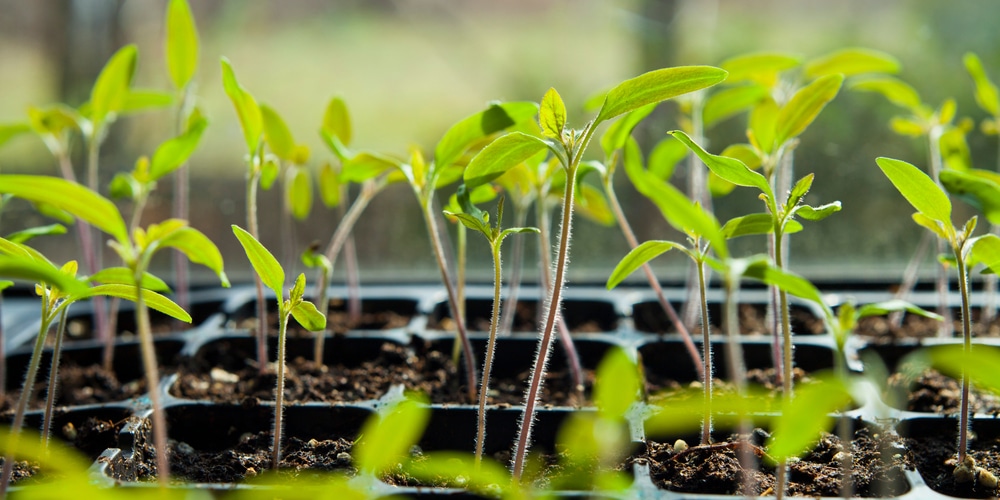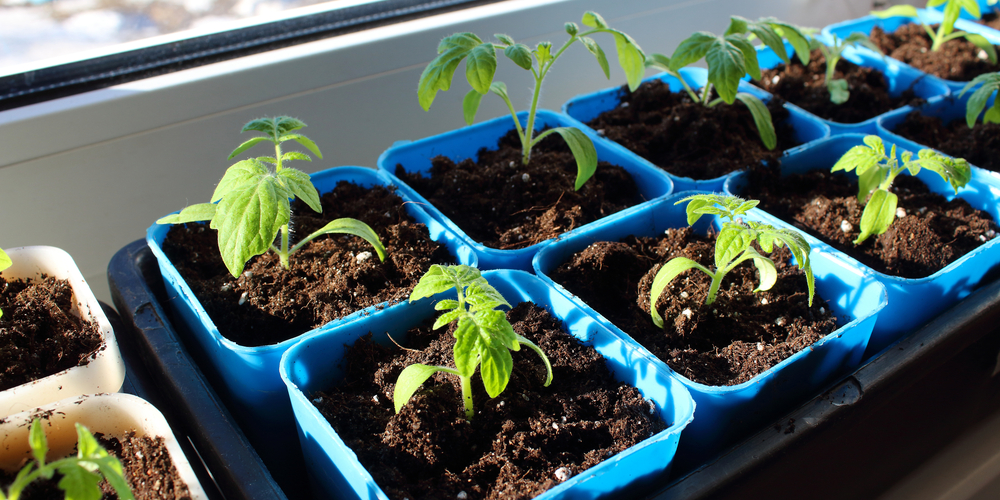Enriching your garden with tomatoes is always a good idea if you offer them what they need to thrive! Indeed, these plants are abundant producers and will give you plenty of satisfaction if you know how to care for them. All you need is a rich and well-draining substrate and plenty of sunlight. Indeed, these plants need about 6 to 8 hours of direct light daily to produce juicy summer fruits.
Growing a vegetable garden can take time and effort to get results. But you must be patient when growing your tomatoes from seeds. Waiting for them to sprout might be stressful, especially if you are a beginner gardener. But germination is only the first step in the making of a plant.
After that, your plants will develop into seedlings and finally into a plant that can start producing fruits. But how long does it take for tomato seeds to germinate? And is there something you can do to speed up the process? You are in the right place to find out!
How Long Does it Take For Tomato Seeds to Germinate?

Let’s get straight to the core of the question. The truth is that under optimal conditions, tomato seeds take about five to ten days to germinate. If you plant your seeds in well-draining soil at temperatures between 65 and 85F, you shouldn’t have problems growing them.
Of course, factors such as humidity levels and air circulation will also affect the speed at which your seed will germinate. Soil that is too wet might cause them to die before they even get a chance to sprout.
Avoid overwatering them to prevent your plants from suffocating due to a lack of air. Also, make sure you keep the substrate loose to allow adequate air circulation.
Don’t forget that the germination rate might also depend on the age and quality of your tomato seeds. Older ones might never give you tomatoes. For this reason, we recommend you plant more than you think you’ll need.
If you live in a warm region, you can plant them directly on the soil. But if you don’t, indoor germination is a better option to raise healthy plants that will give you fruits in the summer.
Start your seeds six to eight weeks before the average date of the last frost in the spring to allow your seedlings to grow in time before transplanting them outdoors.
But don’t forget to harden your plants before moving them outside: the conditions inside your home are nothing like what your tomatoes will encounter on the exterior.
The hardening process only takes about two weeks but is essential to ensure you grow hardy plants that will tolerate even the harshest conditions.
Can You Speed Up The Germination Process?
There are a couple of steps that might help you speed up the germination process. To begin with, you must protect your seeds from extreme conditions: too much heat (or cold) might prevent them from growing.
Temperatures below 70F will cause slower germination, which might not occur if they fall below 60F.
Also, make sure you plant your seeds in a moist substrate: they will only germinate with enough water (but not too much: soggy soil is never good for these plants).
To allow adequate absorption, plant your seeds at about one-quarter of an inch deep and space them four inches apart: they need plenty of room to grow roots.
You don’t have to soak your tomato seeds before planting them: if you can offer them a warm enough and moist environment, you shouldn’t have problems having them germinate.
You can encourage germination by scratching the surface and allowing more sunlight to hit your seeds. Transplant your seedlings when they develop their first true leaves, and the weather isn’t too cold or too hot to support their growth.
If your plants don’t germinate within ten days (and you ensure they get the moisture and warmth they need) after placing them on the ground, they might be too old. In that case, there isn’t much you can do to encourage germination: your seeds might never grow!
How Long Does it Take For Tomato Seeds to Germinate?: The Bottom Line
With this essential guide, you should have a better idea of what to expect when planting tomato seeds. Ensure you provide them with the optimal conditions for their growth to get productive plants!
Related Article: Do Tomato Plants Come Back?
